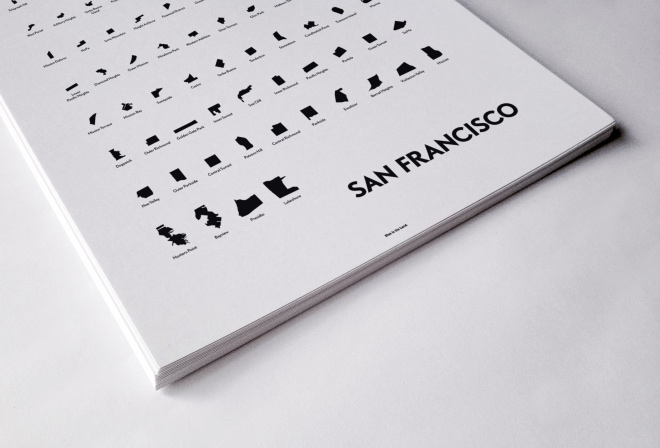Cities and their neighborhoods intrigue Blue is the Land founder and designer Derek Howles. "I’m fascinated by how neighborhoods are formed and what they can tell us about a city," he says. "I’ve loved geography ever since I was old enough to obsessively scour my parents’ world atlas."
After friends and family saw a few neighborhood maps Derek created hanging in his and his wife's home, they asked if he'd design a few more, and so Blue is the Land officially launched in late-2013. With 30 different neighborhood maps and more on the way, Blue is the Land sells prints across multiple channels, like Shopify, Etsy, and Fancy.

Create a Database with Google Sheets and ShipStation
Multiple sales channels increase revenue, which tends to be a good thing for a business. But they also complicate recordkeeping, since transaction information lives in multiple systems.
"It's super important that orders and customer information are funneled through the fulfillment pipeline in a consistent way," Derek explains. To track Blue is the Land's sales across their different marketplaces and platforms, Derek built a database in Google Sheets, consolidating each transaction from every channel in one convenient spreadsheet.
Using app automation tool Zapier, Derek pulls this information from ShipStation, an eCommerce order management platform, where Blue is the Land's orders import for shipping and fulfillment.
"To put it bluntly, Blue is the Land wouldn’t be possible without the automation that Zapier provides."Derek Howles, Founder & Designer, Blue is the Land
With a simple Zap—a bridge between two or more apps—connecting ShipStation's data to recordkeeping in Google Sheets, Derek created a database that populates itself. If you also run an eCommerce business and use ShipStation, this Zap will give you an easily searchable and thorough database of your sales:
Build MailChimp Lists from ShipStation Data
It's not just transaction and order history Derek tracks; he also builds email lists in MailChimp from his customer data in ShipStation. A list like Blue is the Land's can be used to email customers about holiday sales, loyalty discounts, and updates on new neighborhood maps.

Derek even adds an extra step to this particular Zap, using Filter by Zapier to find specific customers. Maybe these customers spent over a certain dollar amount and are part of an exclusive loyalty program. Maybe they purchased a gift or paid in a particular way. Blue is the Land can send customized, targeted emails for particular groups with this Filter step.
"At Blue is the Land, Zapier is integral for pretty much everything involved with fulfillment, logistics, and recordkeeping."Derek Howles, Founder & Designer, Blue is the Land
If you're like Derek and need to find specific customers or just want to add all customers to MailChimp lists, these Zaps will make that process automatic:
"If it doesn't have to do with the creative process of actually researching and designing the prints, it probably relies on a Zapier integration in some way," Derek says. With Zapier, Blue is the Land found a tool to save time and money, allowing Derek to focus on what he's passionate about: geography, art, and design.
All images courtesy of Blue is the Land.
source https://zapier.com/blog/transaction-database-google-sheets/

No comments:
Post a Comment